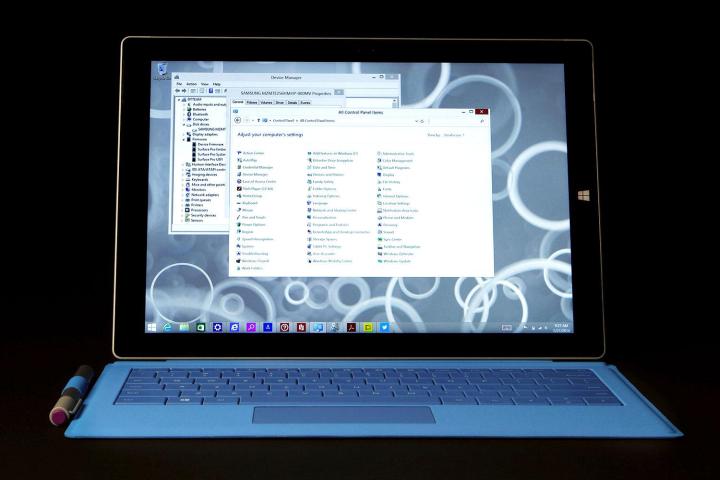
If anything, their decision came later than it should have. The PC market has seen sales dwindle for several years, and are only now beginning to stabilize at levels far below their peak. The outlook is so stagnant, in fact, that Sony may be just the first of several companies to give up. The question is – which company is the next to exit?
Acer
Half a decade ago, Acer was in a wonderful position. The company enjoyed strong global sales, and while profits were slim, they were more than sufficient for the small, agile company. Acer, unlike most competitors, is a PC maker from bow to stern, and as a result, it’s much smaller than its rivals. The company currently employs around 7,700 people worldwide, which is less than a tenth of Dell, and a tiny fraction of the 300,000 individuals that HP has on its payroll.
However, the last five years haven’t been kind to Acer. The company that once fought for first place in the PC world now is forced to settle for fourth in most global sales reports, and the company’s sales continue to lag behind the industry’s overall trend. Acer was the only company in Gartner’s Q1 2014 report to slide year-over-year by more than 10 percent. That, however, was almost a blessing compared to 2013, which saw the company lose 30 percent of its year-over-year sales in some quarters.

Acer’s problem is a lack of product diversity and focus on volume at all costs. This strategy worked wonders in the last decade because consumers had no alternative to the PC and were heavily influenced by price, but the rise of the tablet has given budget buyers a new option. Many of them are picking up Android tablets or iPads instead of PCs, and Acer’s attempts to crack the tablet market have proven to be lackluster so far.
The company also lacks experience in cloud connectivity and enterprise hardware, two portions of the computing world that have taken center stage. Everyone at Acer seems to be aware that this is an issue, and it desperately wants to change the company’s course, as evidenced by the high rate of management turnover since 2011. However, it likely lacks the money and manpower needed to get the job done alone.
Hewlett Packard
There are few names in the computing industry with more prestige than HP, a company that is now over 80 years old. HP has been a part of the personal computing world since its inception, and it’s still one of the largest manufacturers by sales volume. However, there have been signs which indicate that not all is well in its computing division.
In 2011, the company came extremely close to spinning off its computing division in hopes of increasing overall profitability, but it did a double-take after deciding that the resulting independent PC maker would have little chance of competing against conglomerates like Dell, Lenovo, and Sony. Meg Whitman, the company’s CEO, also cited optimism about the future of Windows 8 tablets as a reason for the change of heart.

Well, we’ve all seen how that worked out. In the four years since that reversal, PC sales have continued to fall, and HP has re-shuffled management of its PC division on several occasions. The problem remains the same as ever; poor profits. The operating margin of the Personal Systems unit (the bureaucratic name for the PC division) was a stunningly slim 3 percent in 2013. HP sells millions of systems, but it doesn’t make much money from them.
The only barrier keeping HP in the game is the cost of selling the division. Sony’s exit from the PC business put a loss of 36 billion yen (about $350 million U.S. dollars) on the books, and its division is literally fraction of the size of HP’s Personal Systems. There probably isn’t a company in the world willing to pay enough for HP’s computing division to let the company exit gracefully, but if anyone does unlock an escape route with a lucrative offer, the division will probably be sold without a second thought.
Microsoft
The introduction of the Microsoft Surface Pro and Surface marked the company’s first foray into PC hardware after over two decades as the world’s leading publisher of operating system and productivity software. In theory, the move made sense, as Microsoft was jumping into the growing ocean of tablets.
In practice, though, Microsoft’s tablets have a lot in common with a traditional PC, and have been advertised with Windows and Office as major selling points. This hasn’t struck home with consumers, who are tired of Windows, and have less of a need for Office than ever before.

The original Surface and Surface Pro fell well short of expectations, forcing an infamous inventory adjustment that cost Microsoft almost $1 billion. Newer models have fared slightly better, but they remain niche products. The last-minute decision to kill the smaller version of the Surface Pro 3 just before its reveal is particularly ominous, as it suggests that the company’s internal expectations for the tablet were so bad that it wasn’t worth producing even after development was done and paid for.
All of this foul news means that Microsoft’s foray into computing is on thin ice. The Surface line is not an earner, and hasn’t done much good for Microsoft’s image. While the recently announced layoffs seem to have left the Surface team untouched for now, their focus on Nokia, combined with other statements made by CEO Satya Nadella, suggest that in-house hardware is not part of the new chief’s long term vision. The axe hasn’t dropped on Surface just yet, but it now hangs heavy over the division’s head.
Conclusion
In truth, all of the major computer manufacturers, aside from Lenovo and Apple, are in a position few would envy. Dell is trying to reinvent itself into a broad PC hardware and services company while holding onto profits, Asus is trying to stand out from the crowd while keeping a firm grasp on PC components, and Toshiba is putting every effort into becoming more than just “that brand that makes televisions” in North America.
Yet, these challenges are dwarfed by those that Acer, HP, and Microsoft are facing. These three firm, despite their size and name recognition, are struggling to make money on computers, and that can only go on for so long before a powerful investor throws a tantrum. Then it’s game over, man. Game. Over.
Editors' Recommendations
- How to measure your PC’s power use, and why it matters
- The 5 best laptop deals in Best Buy’s rival October Prime Day sale
- Is the Surface Laptop Studio a legit gaming laptop? Here’s why (and why not)
- Best Buy Anniversary Sale: The 5 Best Tech Deals
- Here’s why your PC can’t install the Windows 10 May 2020 Update yet


